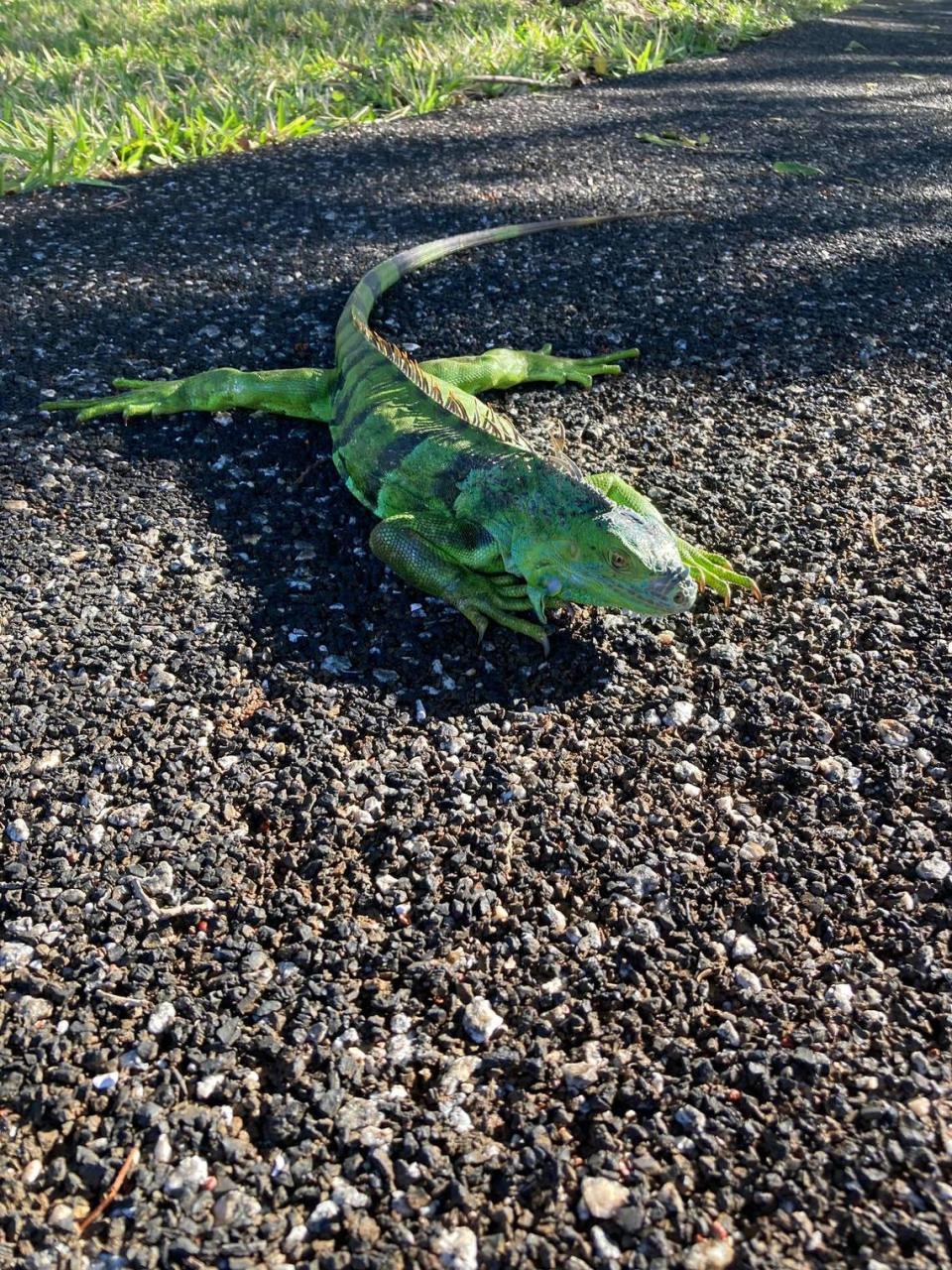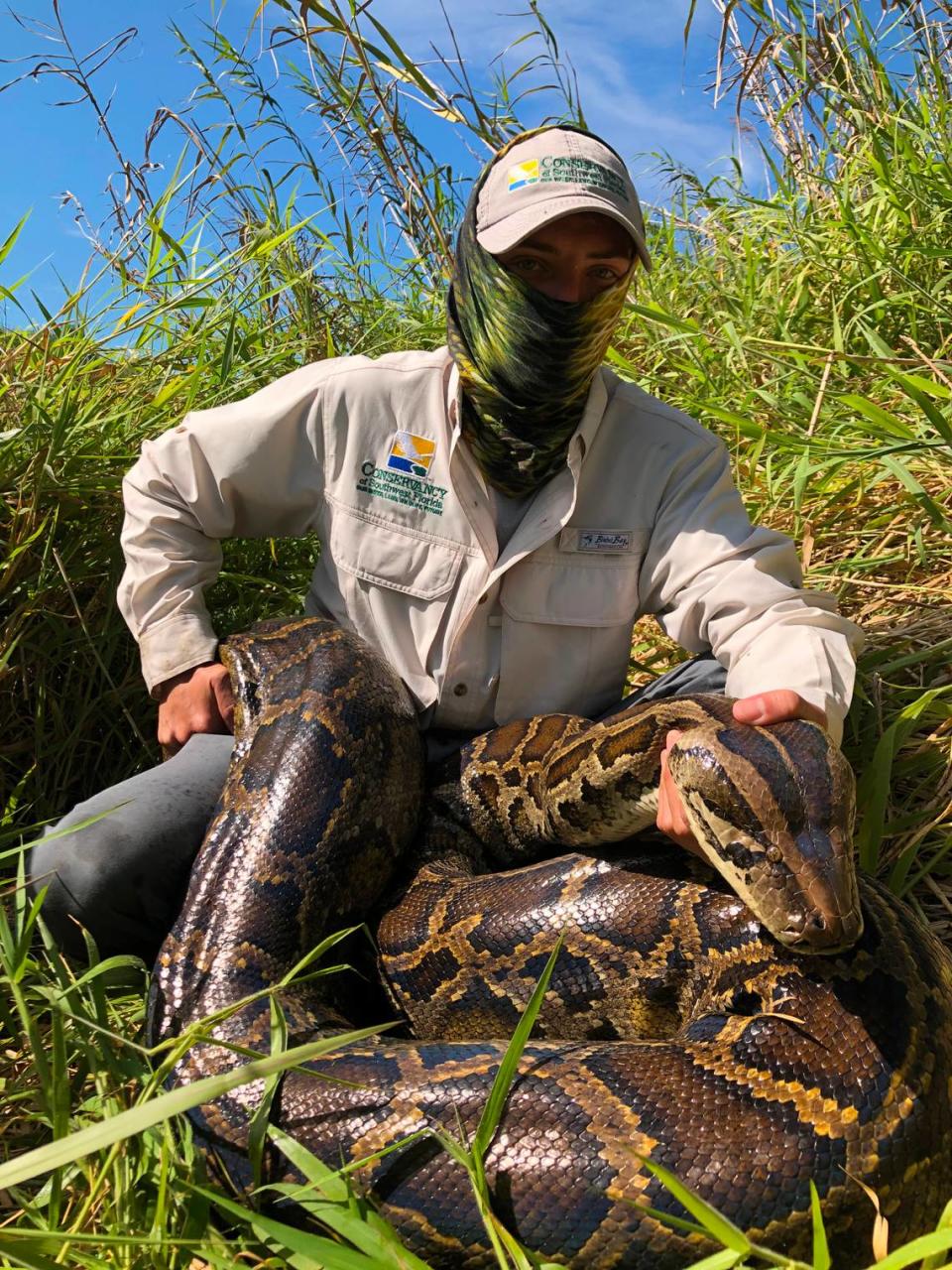‘Falling iguanas’ weather may not wipe out invasive lizards but can make pythons easy pickings
It’s frozen iguana weather again in South Florida and the green lizards have been spotted on driveways and by pools, cold-stunned but not dead. As soon as the sun comes out, they typically warm right up and go back to grazing on gardens and destroying expensive landscaping.
This week’s cold spell likely won’t last long enough to put a dent in the population of large invasive lizards, experts say, but it will probably make it easier to catch another invader that causes even more damage in South Florida: Burmese pythons. When temperatures drop below the 50s, the cold-blooded snakes need to get out of the marshes and onto levees to bask in the sun. Python hunters are on alert.
“It’s the perfect combination of cold nights and sunny days; the snakes have to come out to catch some rays and that’s when we can see them more easily,” said herpetologist Joe Wasilewski. “They are so well adapted that we need to take advantage of times when they might be more vulnerable.”
Temperatures are expected to plunge to the upper 40s once again Wednesday night and Thursday morning in some inland areas, leading South Florida to maintain weather emergency plans and opening overnight shelters. Miami-Dade announced a sheltering plan through Thursday morning, given the forecast.

Miami-Dade and Broward counties have already seen temperatures from the mid-40s to upper 40s Tuesday night, with about 50 degrees reported near the coast, according to the National Weather Service. The wind made it feel like it was in the high 30s and low 40s in some areas.
That makes reptiles like iguanas and snakes lethargic, because they depend on the outside temperature to regulate their own body temperatures. Pythons are larger, so they can withstand colder temperatures longer, but they still need to come out of the water or holes on levees to sun themselves after a few cold nights.
Iguana population and damage booms. Florida’s not sure what to do about it
Florida’s wildlife managers have been waging war for years against the giant snakes that are devouring native mammals and disrupting the natural balance of predator and prey in the Everglades. They are such a threat to the health of the fragile ecosystem that state and federal wildlife managers have put a bounty on their heads and enlisted hundreds of hunters to track them and take them out.
Pythons don’t have natural predators and have found a perfect habitat in the Everglades’ flooded marshes and tree islands. South Florida’s usually balmy weather means they normally don’t even need to worry about staying warm enough to survive.
And even now that pythons have to find shelter from low temperatures, the Everglades gives them what they need: water that’s warmer than the air outside, especially with the wind chill factor making it even colder, and plenty of places to dig holes where they can stay insulated from the cold air outside.

When it’s cold, pythons tend to come out in the late morning, once the ground is warm enough. They tend to look for sunny spots to bask until mid-afternoon and then they hide again for the night, said python hunter Donna Kalil.
But if temperatures don’t climb much above the low 60s during the day, the snakes might wait a day until it really warms up, she said.
“I think it will be good to hunt on Thursday and Friday, when we will be getting back to the 70s,” she said.
This winter season the South Florida Water Management District has seen significantly more catches in the daytime hours than any other time since the program started four years ago, according to Michael Kirkland, invasive animal biologist and manager of the District’s python elimination program.
A prolonged cold snap like the record-breaking first week of January 2010 — when temperatures in the Everglades never rose above 50 for 12 straight days — could seriously knock back reptiles and help wildlife managers get a handle on python populations. But even just a few days of temperatures around the 30s and 40s help limit their range, he said.
“What keeps pythons limited to South Florida is the fact that we have these cold spells,“ Kirkland said.
Another invasive spreads in Florida: A red-headed lizard with an appetite for butterflies

